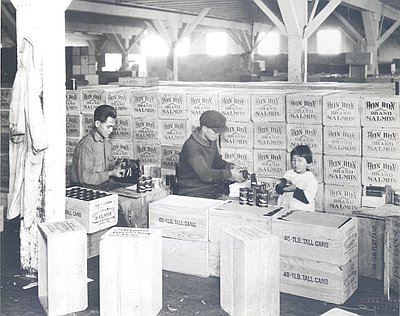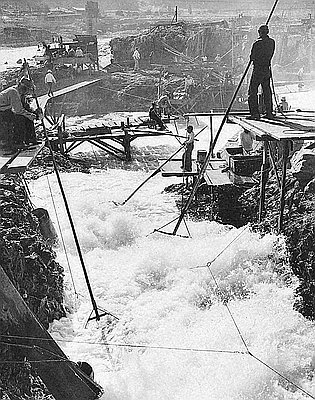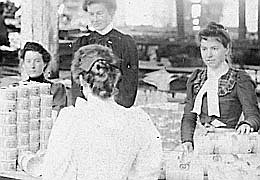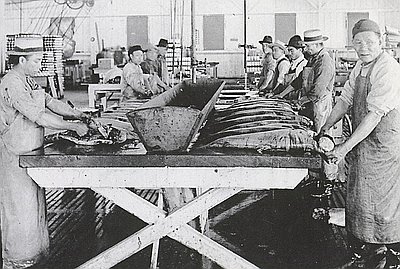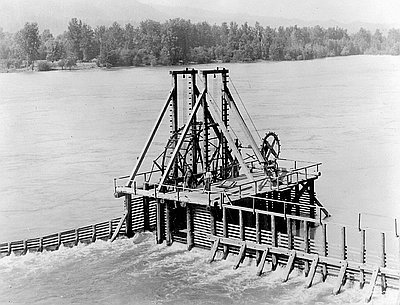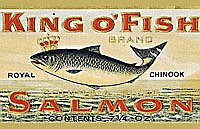Stories and Ceremonies: The Cultural Context of Native Fisheries
In a story traditionally told by Wishram Indians, who lived on the north banks of the mid-Columbia River, the Swallow Sisters built a dam that trapped all of the river’s salmon, leaving none for human communities upriver. Coyote infiltrated the Swallow Sisters’ camp by pretending to be a baby, who they found adorable. When the sisters left their camp to pick huckleberries, Coyote turned himself into a powerful animal and broke their dam apart, releasing the salmon so they could travel upstream. Upriver communities celebrated the return of the salmon runs and learned an important lesson about hoarding food.
Native Americans harvested fish from Pacific Northwest rivers, streams, lakes, and coastal waters within a cultural context in which salmon and other fish were much more than simply food or economic resources. Native ceremonies and stories suggest a reciprocal relationship between people and salmon. Salmon sacrificed their lives to human beings to ensure the survival of human communities. In return, humans were obligated to care for and honor salmon and adhere to various regulations that governed the fishery. This relationship is reflected in oral tradition and in rituals such as the First Foods ceremonies practiced throughout the region.
Columbia Plateau and Pacific Coast Native people held First Foods ceremonies to herald the harvest of roots and berries, celebrate the hunt, and mark the return of the salmon runs. They practiced variations of the First Salmon Ceremony, but key elements remained largely consistent: celebrants cooked and ate the first spring salmon that had been caught ceremonially, after which the bones and sometimes the blood of the fish were returned to the river.
Wherever salmon could be harvested, people practiced a form of the First Salmon Ceremony. Although the geographic range of the custom has diminished as a result of reduced salmon runs, it persists within many modern Indian communities. Contemporary residents of the Pacific Northwest participate in First Salmon ceremonies at universities, powwows, and other cultural gatherings. Celilo Village, about twelve miles east of The Dalles, holds a First Salmon Ceremony each April that is open to the public. Stories articulated the cultural context of the indigenous fishery, ceremonies honored the reciprocal relationship between humans and their foods, and regulations ensured that human communities could harvest the foods they required for survival into the future.
© Katrine Barber, 2006. Updated and revised by OHP staff, 2014.
